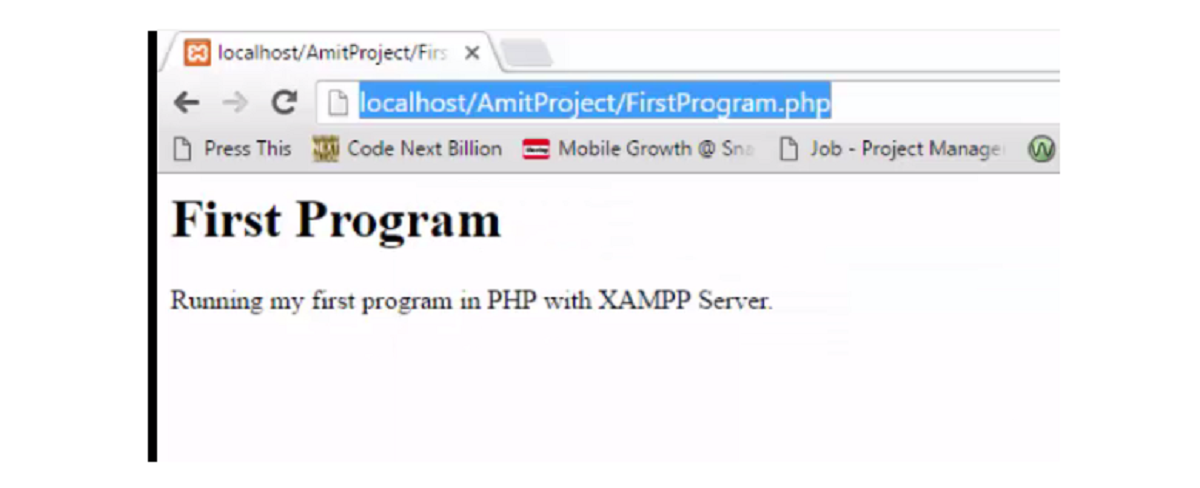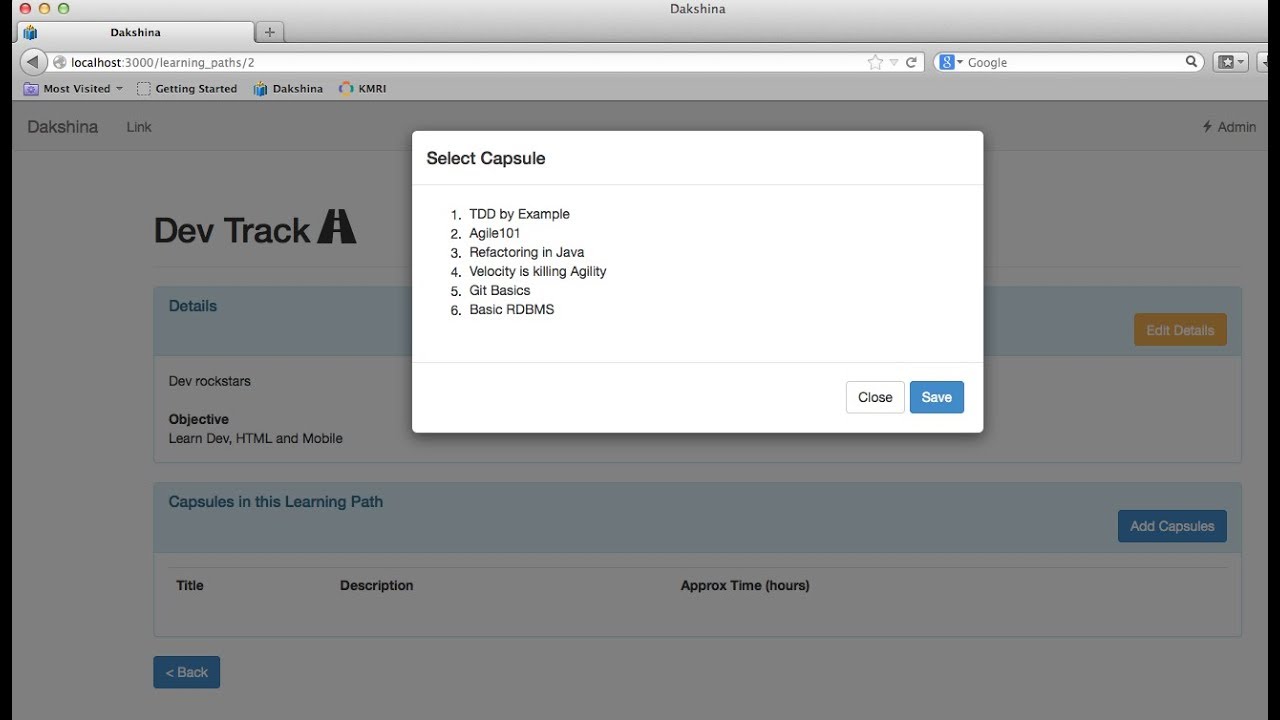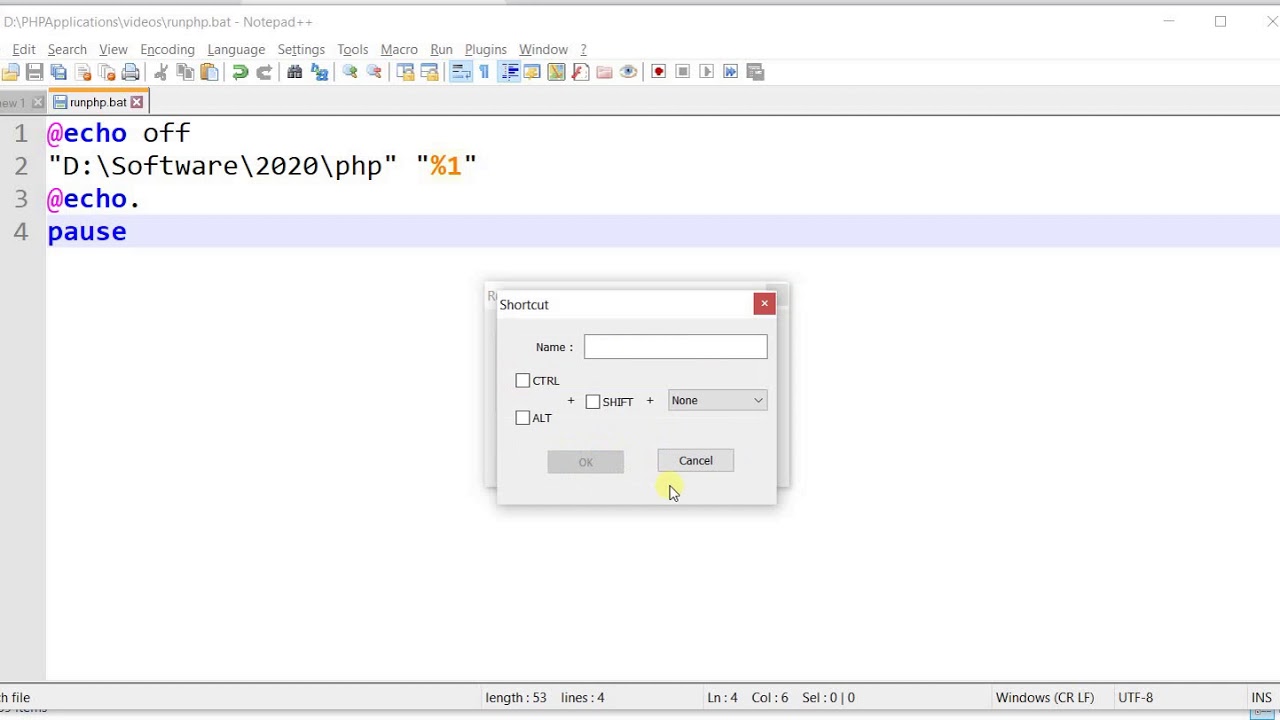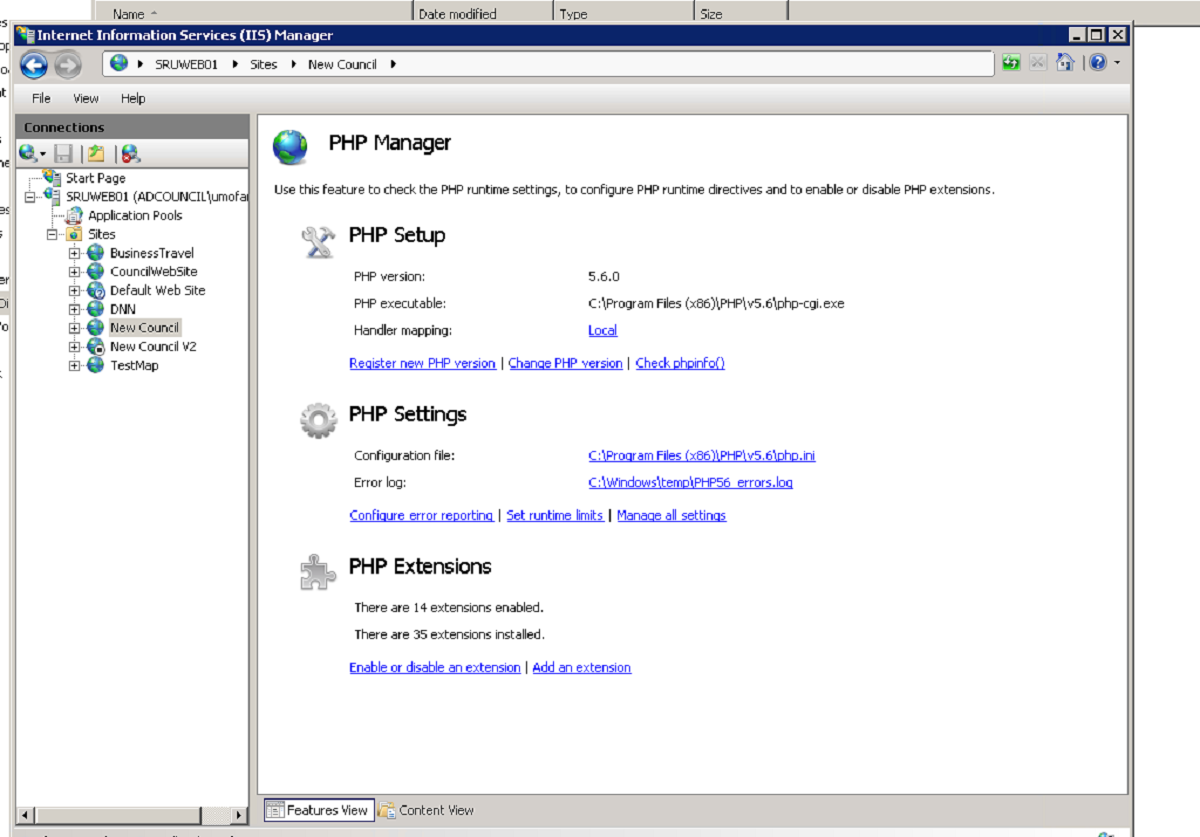Introduction
Welcome to the world of PHP development on Windows! If you’re new to PHP or just getting started with PHP development on a Windows operating system, this article is here to guide you through the process. Whether you’re a seasoned developer or someone with minimal coding experience, running PHP code on Windows can be a straightforward and rewarding experience.
PHP, which stands for Hypertext Preprocessor, is a popular scripting language used for web development. It is widely supported and compatible with various operating systems, including Windows. By running PHP code on your Windows machine, you can develop dynamic websites, create web applications, and handle server-side processing.
In this article, we will explore the different methods you can use to run PHP code on Windows. We will cover the installation of PHP on your Windows system, setting up the PHP environment, and executing PHP code using various tools such as the command prompt, text editors, and web browsers.
Running PHP code on Windows offers several advantages. First, using a familiar operating system like Windows can make the development process more comfortable and intuitive, especially if you’re already familiar with the Windows environment. Second, Windows provides a range of tools and applications that work seamlessly with PHP, allowing you to streamline your development workflow. Lastly, running PHP code on Windows enables you to test and debug your applications locally before deploying them to a live server, ensuring a smoother development process overall.
Throughout this article, we will provide step-by-step instructions, tips, and troubleshooting advice to help you overcome any challenges you might encounter when running PHP code on Windows. So, let’s dive in and explore the various methods and options available for running PHP on your Windows machine!
Installing PHP on Windows
Before you can start running PHP code on your Windows machine, you need to install PHP. Follow these steps to install PHP on Windows:
- Download PHP: Go to the official PHP website at php.net and navigate to the downloads section. Choose the Windows version that corresponds to your system architecture (32-bit or 64-bit).
- Extract the PHP files: Once the PHP zip file is downloaded, extract its contents to a folder of your choice. It is recommended to choose a directory with a simple path, like C:\php, for easier configuration.
- Configure PHP: Open the extracted folder and locate the php.ini-development file. Rename this file to php.ini. Open php.ini in a text editor and make any necessary configuration changes. For example, you might want to enable or disable certain extensions or adjust the file upload limits.
- Set environment variables: To run PHP from anywhere in the command prompt, you need to add the PHP installation directory to your system’s PATH environment variable. To do this, right-click on the Computer icon, go to Properties, click on Advanced system settings, and then navigate to the Environment Variables section. Edit the PATH variable and add the path to the PHP installation directory.
- Test the installation: Open the command prompt and type
php -vto check if PHP is properly installed. You should see the PHP version and other relevant information displayed.
That’s it! PHP is now successfully installed on your Windows machine. This lays the foundation for running PHP code and executing scripts with ease.
It’s worth mentioning that there are other ways to install PHP on Windows, such as using a pre-built package like XAMPP or WAMP, which includes PHP along with other essential web development tools like Apache and MySQL. These packages provide an all-in-one solution for setting up a local web development environment.
In the next sections, we will explore how to set up the PHP environment and run PHP code using different methods, including the command prompt, text editors, and web browsers.
Setting up PHP Environment
Once PHP is installed on your Windows machine, the next step is to set up the PHP environment to ensure your code runs properly. Follow these steps to configure your PHP environment:
- Edit php.ini: Open the php.ini file that you renamed in the previous section. This file contains various settings that control how PHP behaves. You can modify these settings to suit your development needs. Pay attention to options like error reporting, maximum execution time, and memory limits.
- Enable extensions: PHP has a wide range of extensions that provide additional functionalities. To enable an extension, locate the extensions section in the php.ini file and remove the semicolon (;) from the beginning of the line. The extensions you enable will depend on the requirements of your project.
- Configure error reporting: Error reporting is crucial for debugging and troubleshooting your PHP code. In the php.ini file, look for the
error_reportingdirective and set it to display all errors by usingE_ALL. You can also enable or disable specific error types as needed. - Restart the web server: If you are using PHP in conjunction with a web server like Apache or IIS, you will need to restart the server for the changes to take effect. This can usually be done through the server management interface or by restarting the respective services.
In addition to configuring the php.ini file, you may also want to set up a development environment using an Integrated Development Environment (IDE) or a text editor. Here are a few popular choices:
- Visual Studio Code (VS Code): A lightweight and feature-rich text editor with excellent PHP support and a vast array of extensions to enhance your development experience.
- PHPStorm: A powerful IDE specifically designed for PHP development, offering a wide range of features such as code completion, debugging tools, and version control integration.
- Sublime Text: A popular text editor known for its simplicity and extensibility. It provides a smooth coding experience for PHP developers and offers various plugins for added functionality.
Setting up your PHP environment correctly ensures that your code is executed properly and that you have the necessary tools to streamline your development workflow. In the next sections, we will explore different methods of running PHP code on Windows, including using the command prompt, text editors, and web browsers.
Running PHP Code in CMD
The Command Prompt (CMD) is a built-in tool in Windows that allows you to run various commands and execute programs, including PHP scripts. Follow these steps to run PHP code in CMD:
- Open CMD: Open the Command Prompt by pressing the Windows key + R or searching for “CMD” in the start menu.
- Navigate to PHP directory: In the Command Prompt, navigate to the directory where your PHP script is located using the
cd(Change Directory) command. For example, if your PHP script is saved in the C:\php directory, typecd C:\phpand press Enter. - Execute PHP code: Once you are in the correct directory, you can run your PHP script by typing
php filename.phpand pressing Enter. Replacefilename.phpwith the name of your PHP script.
The output of your PHP script will be displayed in the Command Prompt window. If there are any errors or warnings, they will be visible in the output as well. You can use this method to quickly test and execute PHP code without the need for a web server or browser.
It’s important to note that the PHP executable needs to be added to the system’s PATH environment variable as mentioned in the installation section. This allows you to execute the php command from any directory within the Command Prompt.
Running PHP code in CMD is particularly useful for executing standalone scripts or performing quick tests. However, for web development purposes, you will want to explore other methods that allow you to run PHP code in a browser.
In the next sections, we will cover how to run PHP code using a text editor and also how to set up a local web server to execute PHP scripts in a browser.
Running PHP Code in a Text Editor
Many text editors provide built-in functionality or plugins to run and execute PHP code directly within the editor itself. This allows you to write and test your PHP code without leaving the familiar environment of your preferred text editor. Here are the steps to run PHP code in a text editor:
- Select a text editor: Choose a text editor that has built-in support for running PHP code or has a plugin available for running PHP. Some popular choices include Visual Studio Code (VS Code), Sublime Text, and Atom.
- Install necessary plugins: Install any necessary plugins or extensions for your chosen text editor. These plugins usually provide the functionality to execute PHP code within the editor itself.
- Create or open a PHP file: Create a new PHP file or open an existing one in your text editor.
- Execute PHP code: With the PHP file open, you can run the PHP code by using the specific keyboard shortcut or command provided by the text editor or plugin.
Once the PHP code is executed, the output will be displayed within the text editor itself, often in a designated output panel or console. This allows you to view the result of your PHP code, including any errors or warnings, without switching to another application or opening a browser.
Running PHP code in a text editor is particularly useful when you want to quickly test code snippets, experiment with different functionalities, or resolve specific issues within your PHP codebase. It provides a convenient and efficient way to interactively work with PHP without the need for a separate execution environment.
However, for more comprehensive development and testing of PHP-based web applications, it is recommended to set up a local web server and execute PHP code in a browser. We will explore this method in the next section.
Running PHP Code in a Browser
To fully test and run PHP-based web applications, it is essential to execute PHP code in a browser. This allows you to see the output and interact with the PHP application as it would be experienced by end users. Follow these steps to run PHP code in a browser:
- Set up a local web server: Install a local web server such as Apache, Nginx, or XAMPP, which includes Apache, PHP, and MySQL bundled together. This will create a development environment where PHP code can be executed.
- Configure the web server: After installing the web server, ensure that the necessary PHP configuration is properly set up. This may involve modifying the server configuration file, such as the Apache httpd.conf file, to include necessary PHP modules and enable PHP support.
- Create or open a PHP file: Create a new PHP file or open an existing one in a text editor.
- Place the PHP file in the web server’s document root: Move the PHP file to the appropriate location within the web server’s document root directory. This is typically the “htdocs” or “www” folder within the web server installation directory.
- Access the PHP file through the browser: Open a web browser and type the URL corresponding to the PHP file located within the web server’s document root. For example, if your PHP file is named “index.php” and it is located in a subdirectory named “myproject” within the document root, the URL format would be “http://localhost/myproject/index.php”.
When accessing the PHP file through the browser, the web server will process the PHP code and generate a response. The generated output, along with any HTML, CSS, or other web content, will be displayed in the browser window.
This method allows you to test your PHP code within a real web environment, interact with features that depend on web server functionality, and observe how your PHP application behaves when accessed by end users.
Running PHP code in a browser is essential for developing and testing web applications, as it provides a more accurate representation of how your PHP code will function in a production environment. Make sure to follow best practices and security measures when deploying your PHP applications to a live server.
In the next section, we will address common troubleshooting issues that you may encounter while running PHP code on Windows.
Troubleshooting PHP Execution Issues
While running PHP code on Windows, you may encounter some common issues. Here are a few troubleshooting tips to help you overcome them:
- PHP is not recognized: If you are unable to run PHP code in the command prompt or it displays an error saying “php is not recognized as an internal or external command,” ensure that the PHP executable is properly added to the system’s PATH environment variable. Check that the path to the PHP installation directory is correctly added to the PATH variable.
- Web server not running: If you are unable to execute PHP code in a browser, ensure that your local web server is running. Check the server status and start or restart it if needed. Also, make sure the PHP module or extension is enabled and configured correctly within the web server’s configuration files.
- Errors in PHP code: If your PHP code is not executing correctly or displaying errors, check for syntax errors or logical errors in your code. Enable error reporting in the php.ini file to see any error messages that may be generated. Additionally, logging errors to a file can help in troubleshooting and debugging your PHP code.
- File permissions: Make sure that the PHP files and directories have the necessary permissions to be accessed and executed. Incorrect file permissions can cause issues when attempting to run PHP code. Assign appropriate read and execute permissions to the PHP files and directories that need to be accessed.
- Extension conflicts: If you are encountering errors related to specific PHP extensions, check for conflicts between extensions or ensure that the required dependencies are installed. Sometimes, enabling certain extensions can cause conflicts with others, so thoroughly review the extension configurations and ensure compatibility.
Remember to consult the PHP documentation and online resources for more specific guidance on troubleshooting PHP execution issues. There are vast online communities dedicated to PHP development, where you can seek advice and solutions to a wide range of potential issues.
By following these troubleshooting tips and being proactive in resolving any issues you encounter, you can ensure a smooth and efficient PHP development experience on Windows.
Now that you are equipped with the knowledge to overcome common PHP execution issues, you can confidently work with PHP code on your Windows machine.
Conclusion
Running PHP code on Windows is an essential skill for web developers and enthusiasts alike. It allows you to harness the power of PHP and build dynamic web applications with ease. Throughout this guide, we have covered the process of installing PHP on Windows, setting up the PHP environment, and running PHP code using different methods.
By following these steps, you can configure your PHP environment, execute PHP code in the command prompt, run PHP code within a text editor, and test PHP applications in a web browser. Each method has its advantages and can be used for specific scenarios, depending on your development needs.
Additionally, we discussed troubleshooting tips in case you encounter any issues while executing PHP code on Windows. Remember to check for common problems such as PHP not being recognized, web server issues, PHP code errors, file permissions, and extension conflicts. Through proper troubleshooting techniques and using online resources, you can overcome these challenges and ensure smooth PHP execution.
With PHP running on your Windows machine, you have the flexibility to develop, test, and refine your web applications. Whether you’re building personal projects, working on client websites, or contributing to open-source projects, PHP on Windows provides a solid foundation for web development.
Keep exploring and expanding your PHP knowledge by learning about different PHP frameworks, libraries, and best practices. Stay up to date with the latest PHP versions and advancements in the PHP ecosystem to enhance your development capabilities.
Now that you are equipped with the knowledge and tools to run PHP code on Windows, it’s time to embark on your PHP development journey. Enjoy the process, embrace experimentation, and keep building fantastic PHP-powered applications!

























